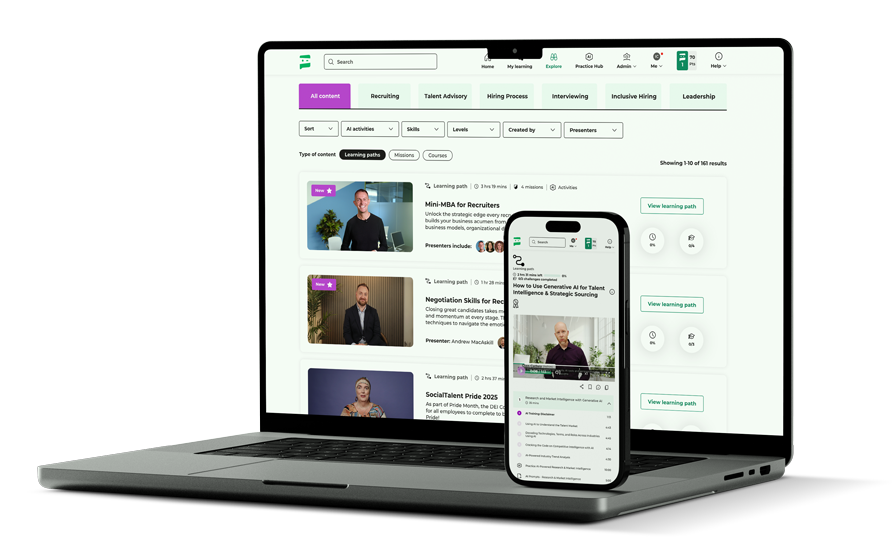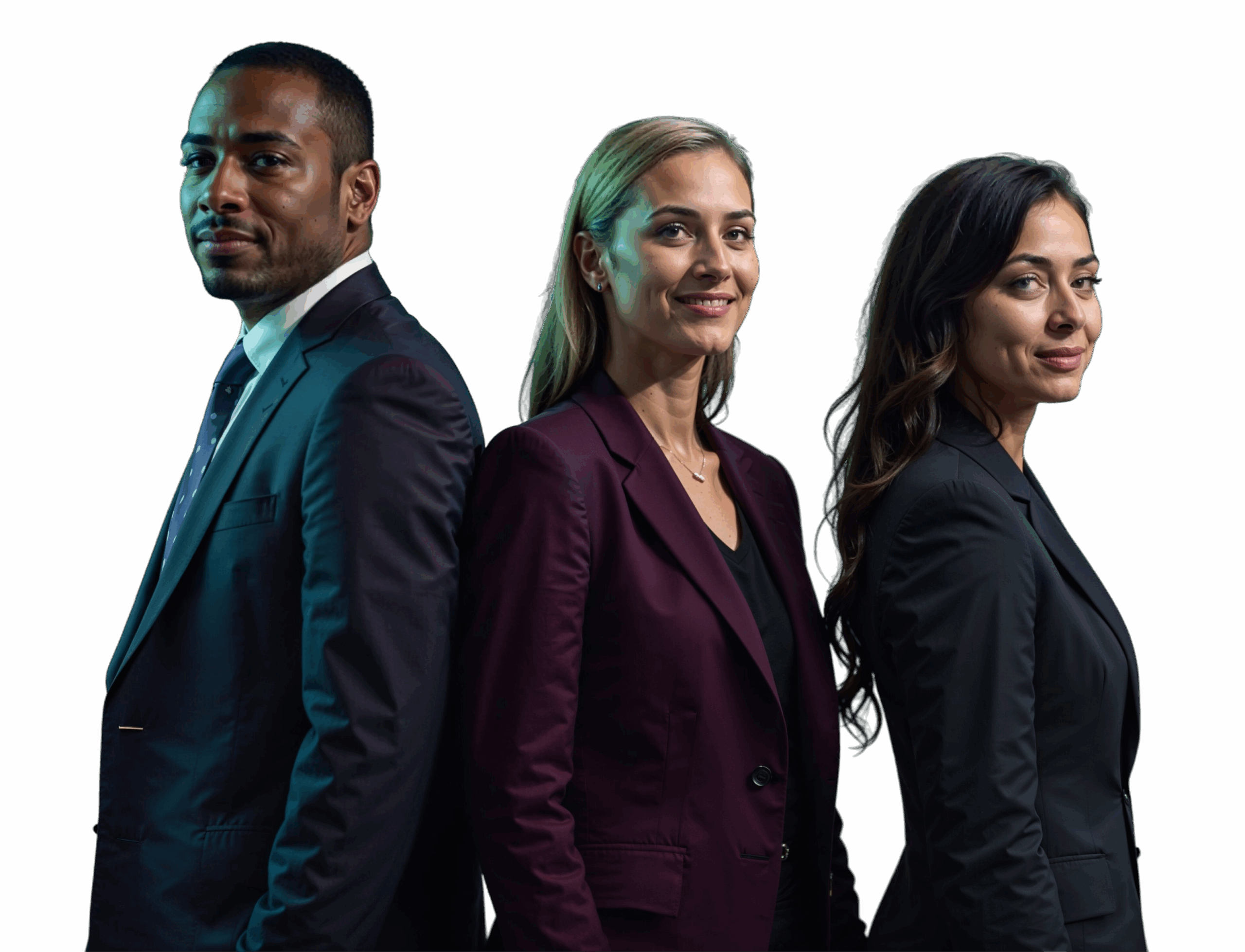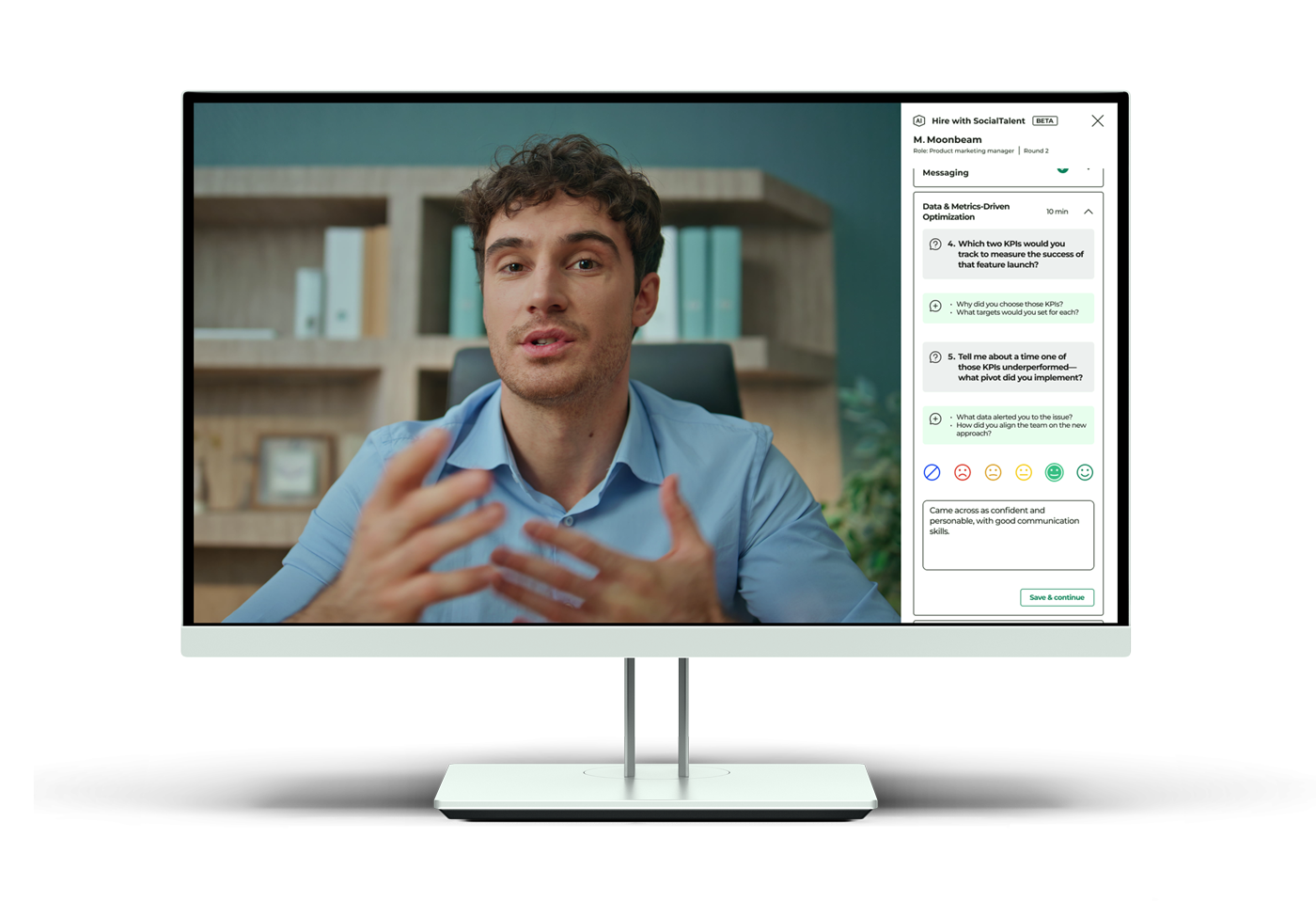The Neuro-Inclusive Hiring Playbook, with Theo Smith
This playbook is a roadmap for creating a more inclusive, neurodiverse-friendly hiring process. Why? Because talent is everywhere, but opportunity often isn’t—and it’s time to change that. Throughout these pages, I’ll share stories, insights, and practical adjustments that don’t cost much but make a world of difference.
And this isn’t just about hiring differently; it’s about rethinking how we empower people to thrive. Together, we can create workplaces where everyone feels valued, supported, and inspired to bring their best.
Let’s get started!
What you’ll learn in this playbook:
1. What is Neurodiversity?
2. Adjustments in Job Ads and Descriptions
3. Adjustments in the Interview Process
4. Your Role as an Interviewer
5. What do Adjustments Look Like?
6. Examples of Adjustments
7. Getting it Wrong in the Assessment
8. A More Caring World
Conclusion
1. What is Neurodiversity?
Neurodiversity is a powerful word. It describes the natural variations in the human brain—differences shaped over thousands of years of evolution. First coined by sociologist Judy Singer in 1998 and championed by journalist Harvey Blume, neurodiversity mirrors biodiversity. Just as ecosystems thrive on variety, human progress depends on the rich diversity of how we think, behave, and solve problems.
Without neurodiversity, we wouldn’t have the innovation, creativity, or resilience needed to tackle the world’s toughest challenges. Think about it: throughout history, we’ve needed impulsive adventurers to leap into the unknown and deep thinkers to quietly untangle life’s complexities. Yet, the modern world—our schools, workplaces, and systems—often isn’t designed to support all thinking types.
I know this firsthand. I was diagnosed with dyslexia as a mature student. I also identify with being ADHD and autistic—labels that helped me understand myself but came late in life. Before that, I had masked so much of who I really was, not even realizing I was doing it. How many others, in your team, your family, or even yourself, are doing the same? How many are unaware of the invisible barriers they’ve been navigating their whole lives?
Neurodiversity isn’t just a term; it’s a way to see the beauty and strength in our differences. It explains why we don’t fit neatly into boxes—and why we shouldn’t have to. It’s time to lift the barriers, embrace this complexity, and create environments where everyone, in their unique way, can thrive.
2. Building a Neuro-Inclusive Hiring Process: Job Ads
One of the earliest missteps in recruitment happens in the communication we send to candidates—starting with job ads and descriptions. Who’s responsible for getting this right? The hiring manager, the recruiter, or HR? It doesn’t really matter, because if your job ad isn’t attracting the right candidates, it’s time to take notice.
The problem often starts with outdated, catch-all job descriptions . These documents, originally created to define responsibilities or manage performance, end up being repurposed as job ads. Over the years, layers of edits, jargon, and nonsensical additions make them irrelevant and unappealing. Combine this with obscure job titles, and you’re left with an ad that’s hard to search for and even harder to understand.
Here’s why this matters:
- Clarity attracts talent. Data shows women often won’t apply unless they meet most requirements, and neurodiverse talent may struggle with vague or ambiguous language. Poorly written descriptions can alienate these groups.
- Searchability is critical. If the job title is unclear, candidates won’t find it in searches. For example, a “Technical Analyst” role might make perfect sense internally but could be meaningless to a skilled software tester scanning job boards.
To fix this, focus on creating job ads that are:
- Specific: Highlight real tasks and responsibilities for the role.
- Inclusive: Use clear, simple language that avoids internal jargon or double meanings.
- Searchable: If the job title is confusing, clarify it in the first line of the ad. For example:
- Job Title: Technical Analyst
- First Line: “Are you a software tester with experience in automation tools like X or Y?”
By refining your job ads, you’ll not only improve their visibility and accessibility but also attract a broader, more diverse pool of exceptional talent.
Learn more: How to Write More Inclusive Job Descriptions
3. Adjustments in the Interview Process
We’ve all been there—interviewing a candidate who looks great on paper but doesn’t seem to perform well on the day. Maybe they’ve aced a prior test or assessment but suddenly go quiet in the face-to-face interview. Their responses are brief, even disconnected. What’s going on? And more importantly, how often do we pause to consider why this might be happening?
Interviews are strange, high-pressure environments. For many candidates, especially neurodivergent individuals, they can feel unnatural and solitary. The shift to digital interviews has offered some flexibility in terms of time and location but comes with its own challenges: tech reliance, limited preparation guidance, or the lack of a suitable and safe environment. Whether in-person or virtual, the process often becomes a lottery of unspoken rules and inconsistent expectations.
Here are some common barriers candidates face during interviews:
- Ambiguous expectations: Is note-taking allowed? Are handshakes expected? What about eye contact? These unspoken rules can overwhelm candidates, especially those unfamiliar with certain social cues.
- Rigid or chaotic structures: Overly formulaic interviews may stifle natural interaction, while poorly planned ones confuse candidates and interviewers alike.
- Uncomfortable environments: No access to water or restrooms, intimidating panel setups, or poorly communicated digital setups create stress and impact performance.
How to Improve the Process
- Set clear expectations: Provide candidates with detailed instructions about the format, what’s allowed (e.g., note-taking), and what to expect from the day.
- Create a welcoming environment: Offer basic comforts like water and breaks for in-person interviews, or clear instructions and tech checks for virtual ones.
- Tailor your approach: Adapt your structure to allow for more conversational moments or alternative ways for candidates to share their strengths.
By asking “why is this happening?” and by making simple adjustments, you can transform interviews from a test of survival into a space where candidates feel empowered to showcase their true potential.
Learn More: 7 Ways to Create a Truly Inclusive Candidate Experience
4. Your Role as an Interviewer
As an interviewer, you have a profound responsibility in shaping the candidate experience. This is particularly true when engaging with neurodiverse talent. Imagine a candidate who may be on the autism spectrum—they might miss social cues or struggle with physical interactions like handshakes or direct eye contact. For some, these interactions can cause visible discomfort, potentially leading you to misinterpret their behavior as disinterest or rudeness. But here’s the truth: it’s not about them failing to fit the process—it’s about us failing to adapt to the process.
Interviews are far from a natural setting. They’re high-pressure, unfamiliar, and often don’t fairly reflect how someone will perform in the actual role. To support neurodiverse candidates—and truly all candidates—we must shift our mindset and processes.
Quick Wins to Improve the Interview Process:
- Proactive Communication: Provide clear and detailed information upfront. Include specifics about:
- The location and how to access it (including signage and floor details).
- Who will be present and their roles.
- The format of the interview and any assessments involved.
- Any tools, technology, or preparation needed for virtual or in-person settings.
- Opportunities for Support: Offer candidates multiple chances to ask questions or request accommodations. Don’t rely on a disability tick box—ask for feedback at every stage to improve their experience.
- Simplify Questions: Avoid overly complex, jargon-heavy, or layered questions. Stick to clear, relevant queries tied directly to the role.
- Reevaluate Assessments: Question whether every test or assessment is necessary and if it fairly reflects the role. Ensure the methods don’t inadvertently exclude neurodiverse talent.
- Minimize Stress: Consider providing pre-interview resources, such as photos of the environment, example questions, or a schedule. This reduces anxiety and allows candidates to focus on showcasing their skills.
The Takeaway
If a candidate seems uncomfortable or struggles to respond, it’s worth asking: what have we done to create this situation? Interviews should empower candidates to show their strengths, not put up barriers. By taking responsibility for improving candidate experience, we can open the door to diverse, skilled talent and ensure every individual has the chance to succeed.
5. What do Adjustments Look Like?
Some of the best adjustments you can make in the interview process are simple, cost little (or nothing), and have a significant impact on candidate experience. As discussions around candidate experience take center stage, shouldn’t these small but effective changes be a priority in our processes? The answer is often straightforward: yes, they can be done—and they should.
Here’s a great example. I once interviewed a candidate who had the right skills and experience but struggled to provide cohesive answers in the moment. They weren’t alone—this kind of stress, heightened by dyslexia, ADHD, or anxiety, can make interviews overwhelming for many. So, I made an adjustment: I provided the interview questions, or at least examples, ahead of time.
The results were transformative. Candidates felt more prepared, which reduced their stress and allowed them to give thoughtful responses. Interviewers, in turn, gained clearer insights into each candidate’s abilities and potential. It became a win-win for everyone involved.
One head of talent acquisition from a global tech company took inspiration from this approach after attending one of my talks. They rolled out the initiative across their organization and were surprised to find no pushback from hiring managers—just glowing feedback. Everyone agreed that the adjustment improved both candidate experience and the quality of the interviews.
Why This Works:
- Reduces Stress: Candidates know what to expect, helping them focus on showcasing their abilities.
- Improves Outcomes: Interviews become more structured and effective, leading to better data and decisions.
- Enhances Experience: Candidates and interviewers feel more confident and engaged throughout the process.
Sometimes, we fear the perceived complexity of making changes and, as a result, avoid them altogether. But adjustments like these are simple, scalable, and beneficial to everyone. So, why not try? You might just find that a small tweak can take your process—and your results—to new heights.
6. Examples of Adjustments for a Neuro-Inclusive Hiring Process
Adjustments in the hiring process don’t need to be complex or costly to be effective—they just require empathy and a willingness to adapt. Here are two real-life examples of workplace adjustments that made a significant impact on candidate experience.
1. The Presentation Alternative
While working at a previous company, a candidate disclosed that preparing slides for an interview presentation would be too challenging due to physical and neurological disabilities. Unfortunately, the requirement wasn’t shared early enough in the process, and they nearly withdrew.
The adjustment? Instead of a formal presentation, the candidate was invited to respond to tailored questions designed to achieve the same goal: showcasing their problem-solving and leadership skills. The result? Not only did this simple adaptation help the candidate feel valued, but they also described it as the most inclusive interview they’d ever experienced.
2. Bringing a Job Coach to an Interview
At a tech company, a candidate on the autism spectrum asked if they could bring their mum to a phone interview. The mum acted as a job coach, supporting the candidate by clarifying questions and ensuring communication went smoothly. The adjustment worked seamlessly—the interview flowed well, and the candidate’s skills were fully understood.
Job coaches, particularly for neurodiverse talent, are increasingly recognized as vital for helping individuals navigate workplace challenges. While this may initially seem unconventional, the success of such adjustments highlights their value.
Lessons Learned
- Ask the Question: Simple inquiries like “How can we support you?” can uncover adjustments that enable candidates to thrive.
- Tailor, Don’t Overthink: Most adaptations—like providing alternative tasks or allowing a support person—are straightforward and yield meaningful results.
- Build a Framework: Use feedback to create a neurodiversity accessibility pack, incorporating universal design principles into your hiring process.
When we take small steps to adapt, we empower candidates to show their best selves. Often, these adjustments are no more complicated than providing left-handed scissors for a left-handed person. All it takes is listening and responding with intention.
7. Getting it Wrong in the Assessment
One of the biggest challenges with assessments today is the reliance on automation and the wide variety of methodologies in use—psychometric testing, gamified assessments, and more. Graduates entering the workforce encounter a dizzying range of these methods, each tailored to an organization’s preferences. While they may be innovative or “tried-and-tested,” many fail to account for neurodiverse candidates, whose unique ways of processing information may not align with these one-size-fits-all systems.
The problem is compounded by the fact that no two neurodivergent individuals are the same. For example, one person on the autism spectrum might excel in a particular type of assessment, while another may struggle with it due to differing cognitive processes. Despite these variations, organizations are pressured to standardize assessments for cost efficiency, locking them into rigid systems that may unintentionally exclude neurodiverse talent.
Common Issues with Assessments for Neurodiverse Candidates:
- Ambiguity: Neurodiverse candidates often analyze tasks deeply and systematically. Ambiguous instructions can lead to confusion and slower completion times, negatively impacting scores.
- Distraction: For candidates with ADHD, the design of some assessments—whether due to visual clutter or multiple variables—can disrupt focus and performance.
- Unintended Bias: Many assessment tools were not designed with ND talent in mind, leading to outputs that misrepresent their abilities.
Why This Matters:
A poor assessment process doesn’t just disadvantage neurodivergent candidates—it risks missing out on exceptional talent. Neurodiverse individuals don’t want to bypass the process; they simply want a fair chance to demonstrate their abilities. Adjustments that help neurodiverse candidates thrive aren’t just beneficial for them—they improve overall outcomes, ensuring better performance data, enhanced experiences, and a more inclusive hiring process.
Solutions to Explore:
- Audit Your Assessments: Work with providers to identify potential biases and ambiguity in tasks.
- Offer Flexible Options: Provide alternatives or adjustments to fit different cognitive styles, such as breaking tasks into smaller segments or allowing additional time.
- Iterate on Feedback: Ask candidates—especially neurodiverse individuals—about their experience and use this input to refine your process.
Adjustments aren’t about giving an unfair advantage; they’re about leveling the playing field. When we build assessments with inclusivity at the forefront, we ensure all candidates have a genuine opportunity to showcase their best selves.
8. A More Caring World, Higher Productivity
The demand for talent is greater than ever, and yet it often feels like the pool has dried up. We’re searching desperately for skilled individuals, feeling like we’re stranded in a desert with no water. But the truth is, there’s a vast, untapped reservoir of talent right around the corner—we just need to start looking in the right places.
Take this staggering statistic from the Office for National Statistics (ONS): only 22% of autistic adults are in employment. Many of these individuals never make it through traditional recruitment processes, which are often unintentionally designed to exclude them. These are exceptionally gifted people, with unique skills and perspectives that could transform our teams and organizations. Yet we overlook them, continuing to dig in the same barren places for talent.
The data paints a stark picture: according to a Fast Company article, only 4% of companies that focus on diversity and inclusion prioritize disability. Neurodiversity, as a subset of disability, is even less understood or addressed. This neglect is happening at a time when organizations are more desperate than ever for innovative, capable employees.
Why This Matters
If you want to stand out in a competitive talent market, start by doing what 9 out of 10 companies with D&I initiatives fail to do: prioritize neurodiversity. It’s not about overhauling your entire system overnight—it’s about recognizing the immense potential in this talent pool and taking meaningful steps to tap into it.
The Call to Action
The excuses have run out. “We’ll think about it next year,” or “It’s too complicated,” won’t cut it anymore. The time to adapt and embrace neurodiversity is now. By doing so, we don’t just create better workplaces—we create a more caring, inclusive world, where talent isn’t wasted and innovation thrives. So, stop using toothpicks and thimbles. It’s time to bring out the shovel and wheelbarrow.
Learn more: Championing Neurodiverse Talent
Conclusion
Thank you for taking the time to explore this playbook. I hope it’s inspired you to think differently about how we approach neurodiversity in the workplace. The stories, insights, and adjustments shared here are just the beginning—real change comes from taking action.
Remember, creating an inclusive environment isn’t about perfection; it’s about progress. Small, thoughtful changes can unlock incredible potential, not just for individuals but for teams and organizations as a whole. So, let’s commit to being the leaders who challenge norms, lift barriers, and create a world where everyone has the chance to thrive. The time to start is now.
Looking to drive a culture of hiring excellence? SocialTalent has the training to enable you to achieve this. Reach out to our team today.
Theo Smith
Theo Smith is a leading neurodiversity advocate, consultant, and the founder of Neurodiversity at Work Ltd. Co-author of the award-winning book Neurodiversity at Work, Theo has become a globally recognized voice in the field.
Host of the popular Neurodiversity with Theo Smith podcast, where he explores the challenges and opportunities of creating inclusive environments for neurodivergent individuals, Theo currently is co-authoring his second book with Professor Amanda Kirby, focusing on neurodiversity for parents. With a unique blend of expertise in HR, recruitment, and neurodiversity advocacy, Theo works with organizations worldwide to unlock the potential of neurodiverse talent and drive meaningful change.


